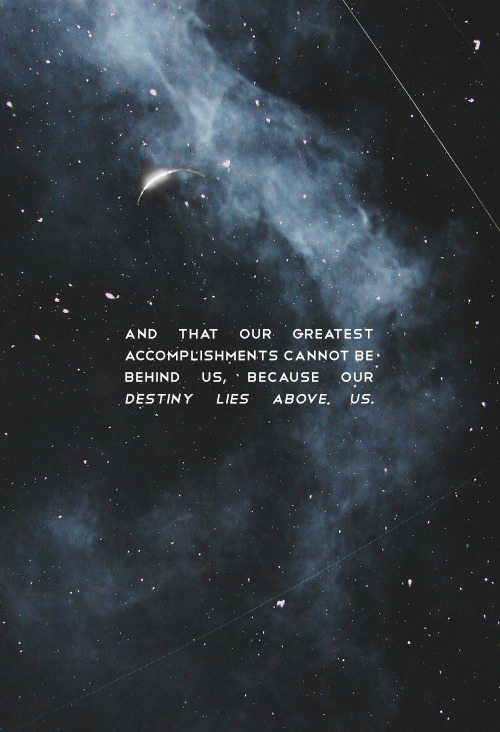"Astronomy compels the soul to look upwards and leads us from this world to another." - Plato
147 posts
Latest Posts by intergalacticnerd - Page 2
Solar System: Things to Know This Week
Here are a few things you should know about our solar system this week:
1. The Bright and the Beautiful

In its lowest-altitude mapping orbit, at a distance of 240 miles (385 kilometers) from Ceres, Dawn has provided scientists with spectacular views of the dwarf planet, especially of its bright, young, hexagonal craters like Haulani.
2. Mars Needs Brains

NASA is soliciting ideas from U.S. industry for designs of a Mars orbiter for potential launch in the 2020s. The satellite would provide advanced communications and imaging, as well as robotic science exploration, in support of NASA’s Journey to Mars. This effort seeks to take advantage of industry capabilities to improve deep space, solar electric propulsion-enabled orbiters.
3. Seeing Double

NASA measured a solar flare from two different spots in space, using three solar observatories. During a December 2013 solar flare, three sun-observing spacecraft captured the most comprehensive observations ever of an electromagnetic phenomenon called a current sheet.
4. Set a Course for Europa

This artist’s rendering shows NASA’s Europa mission spacecraft, which is being developed for a launch in the 2020s. The mission would place a spacecraft in orbit around Jupiter in order to perform a detailed investigation of the giant planet’s moon Europa—a world that shows strong evidence for an ocean of liquid water beneath its icy crust and which could host conditions favorable for life.
5. Go Deep

Jupiter is huge, powerful and spectacular. But what lies hidden inside the giant planet? The Juno mission arrives at Jupiter in July to help us find out. Join Dr. Fran Bagenal to learn more about the mission and how it plans to delve deep into Jupiter’s secrets this year.
Want to learn more? Read our full list of things to know this week about the solar system HERE.
Make sure to follow us on Tumblr for your regular dose of space: http://nasa.tumblr.com
Solar System: Things to Know This Week
Here are a few things you should know about our solar system this week:
1. Gearing Up for a Grand Finale

There’s just a year left until the Cassini mission begins its Grand Finale – the final phase of its mission, during which the spacecraft will dive repeatedly between the planet and the rings. To get ready, the Cassini team has launched an enhanced, mobile device-friendly version of the mission website. The site includes information about Cassini, Saturn, the moons and the rings – but it also tells the human stories behind one of the most ambitions expeditions of all time.
2.Caught in Transit

On Monday, May 9, the planet Mercury will cross directly in front of the sun, an event that hasn’t occurred since 2006 and won’t happen again until 2019. Find out how to watch HERE.
3. A Moon for Makemake

Our Hubble Space Telescope has spotted a small, dark moon orbiting Makemake (pronounced “MAH-kay MAH-kay). Make make is the second brightest icy dwarf planet – after Pluto – in the faraway Kuiper Belt.
4. The Age of the Aquarids

The Eta Aquarid meteor shower is the first of two showers that occur each year as a result of Earth passing through dust released by Halley’s Comet. This year, it should peak on the night of May 5/6. Get tips for watching HERE.
5. The Southern Lights of Saturn

On May 4, Cassini will reach periapse, the closest point to Saturn in the spacecraft’s orbit. At about this time, Cassini’s cameras will monitor Saturn’s south polar aurorae, and also image the bright limb of the planet to better understand its upper haze layers.
Want to learn more? Read our full list of the 10 things to know this week about the solar system HERE.
Make sure to follow us on Tumblr for your regular dose of space: http://nasa.tumblr.com
What’s Up for May 2016?

What’s Up for May? Two huge solar system highlights: Mercury transits the sun and Mars is closer to Earth than it has been in 11 years.

On May 9, wake up early on the west coast or step out for coffee on the east coast to see our smallest planet cross the face of the sun. The transit will also be visible from most of South America, western Africa and western Europe.

A transit occurs when one astronomical body appears to move across the face of another as seen from Earth or from a spacecraft. But be safe! You’ll need to view the sun and Mercury through a solar filter when looking through a telescope or when projecting the image of the solar disk onto a safe surface. Look a little south of the sun’s Equator. It will take about 7 ½ hours for the tiny planet’s disk to cross the sun completely. Since Mercury is so tiny it will appear as a very small round speck, whether it’s seen through a telescope or projected through a solar filter. The next Mercury transit will be Nov. 11, 2019.

Two other May highlights involve Mars. On May 22 Mars opposition occurs. That’s when Mars, Earth and the sun all line up, with Earth directly in the middle.

Eight days later on May 30, Mars and Earth are nearest to each other in their orbits around the sun. Mars is over half a million miles closer to Earth at closest approach than at opposition. But you won’t see much change in the diameter and brightness between these two dates. As Mars comes closer to Earth in its orbit, it appears larger and larger and brighter and brighter.

During this time Mars rises after the sun sets. The best time to see Mars at its brightest is when it is highest in the sky, around midnight in May and a little earlier in June.

Through a telescope you can make out some of the dark features on the planet, some of the lighter features and sometimes polar ice and dust storm-obscured areas showing very little detail.

After close approach, Earth sweeps past Mars quickly. So the planet appears large and bright for only a couple weeks.

But don’t worry if you miss 2016’s close approach. 2018’s will be even better, as Mars’ close approach will be, well, even closer.
You can find out about our #JourneytoMars missions at mars.nasa.gov, and you can learn about all of our missions at http://www.nasa.gov.
Make sure to follow us on Tumblr for your regular dose of space: http://nasa.tumblr.com

Orion and the Horse-head in Infrared
This wide image of the Orion Molecular Cloud Complex features the Flame nebula (NGC 2024) and the Horsehead nebula (NGC 2023). In this infrared image, the Horsehead can be seen on the bottom right as a small wisp of gas protruding from the complex. The colors in this image do not represent visible light because it was imaged with the Spritzer Space Telescope - which can only see infrared light. As a result, scientist must map temperatures to colors. Cooler objects, such as the dust of the nebulae, appear green and red and hotter objects appear more blue. Astronomers are essentially “shifting” the infrared light into the visible spectrum.
Credit: NASA/JPL/Cal Tech










Watch: Leonardo DiCaprio calls to end climate change in Oscar acceptance speech.

Astronaut Leland Melvin includes his rescued dogs in best NASA portrait ever.
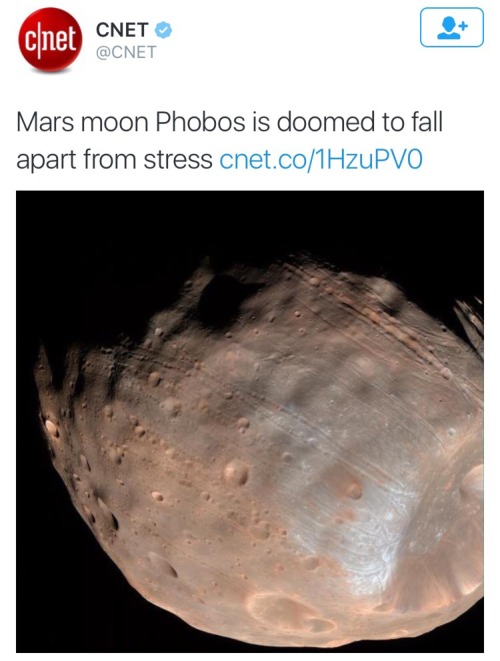
Wow me too

The Hunter heads West
photo by rivermusic, March 14, 2016
how to get an alien to abduct you

The Belt of Venus is a pink glowing arch seen across the sky when the shadow of the Earth’s translucent atmosphere casts a shadow back upon itself.


M3 is Astronomy Magazine Picture of the Day



Views of the Space Shuttle Atlantis undocking from the Mir space station on July 4, 1995. Cosmonauts Anotoliy Slovyev and Nikolai Budarin unparked the Soyuz spacecraft from Mir to perform a short fly-around when they snapped these astonishing photos. (NASA)


February 7, 1984 – Astronauts Bruce McCandless II and Robert L. Stewart make the first untethered spacewalk using the Manned Maneuvering Unit (MMU) during mission STS-41B of the Space Shuttle Challenger.
(NASA)

Valles Marineris: The Grand Canyon of Mars
Image Credit: Viking Project, USGS, NASA
The largest canyon in the Solar System cuts a wide swath across the face of Mars. Named Valles Marineris, the grand valley extends over 3,000 kilometers long, spans as much as 600 kilometers across, and delves as much as 8 kilometers deep. By comparison, the Earth’s Grand Canyon in Arizona, USA is 800 kilometers long, 30 kilometers across, and 1.8 kilometers deep. The origin of the Valles Marineris remains unknown, although a leading hypothesis holds that it started as a crack billions of years ago as the planet cooled. Several geologic processes have been identified in the canyon. The above mosaic was created from over 100 images of Mars taken by Viking Orbiters in the 1970s.

A Laser Strike at the Galactic Center










A recap of January in pictures! Winters the best time for astrophotography which is why I’ve had plenty of opportunities to get outside and capture the cosmos!


This new NASA/ESA Hubble Space Telescope image shows three of Jupiter’s largest moons parade (seems the perfect word for it) across the giant gas planet. This happens only once or twice every 10 years.
Here’s a more clear view to it:


Shuttle Plume Shadow Points to the Moon
In early 2001 during a launch of Atlantis, the Sun, Earth, Moon, and rocket were all properly aligned for this photogenic coincidence. First, for the space shuttle’s plume to cast a long shadow, the time of day must be either near sunrise or sunset. Only then will the shadow be its longest and extend all the way to the horizon. Finally, during a Full Moon, the Sun and Moon are on opposite sides of the sky. Just after sunset, for example, the Sun is slightly below the horizon, and, in the other direction, the Moon is slightly above the horizon. Therefore, as Atlantis blasted off, just after sunset, its shadow projected away from the Sun toward the opposite horizon, where the Full Moon just happened to be.
Image Credit: Pat McCracken, NASA
(via NASA)
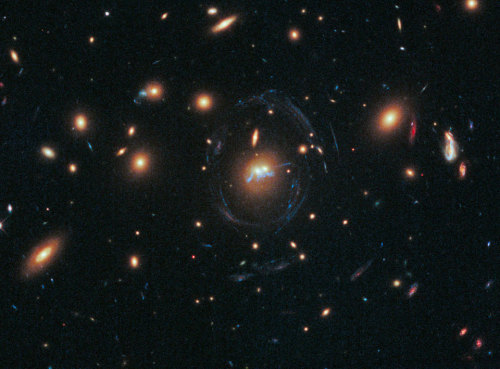
A Blue Bridge of Stars between Cluster Galaxies designated SDSS J1531+3414

A Message from Earth (AMFE) is a high-powered digital radio signal that was sent on 9 October 2008 towards Gliese 581 c, a large terrestrial extrasolar planet orbiting the red dwarf star Gliese 581. The signal is a digital time capsule containing messages that were selected through a competition. The message was sent using the RT-70 radar telescope of Ukraine’s National Space Agency. The signal will reach the planet Gliese 581 c in early 2029. Many people including celebrities and politicians participated in the AMFE project, which was the world’s first digital time capsule where the content was selected by the public.
More info HERE
More info on Gliese 581 c HERE
Follow Ultrafacts for more facts
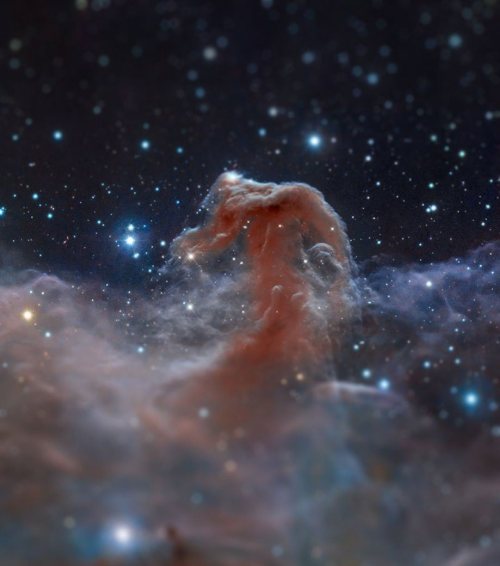
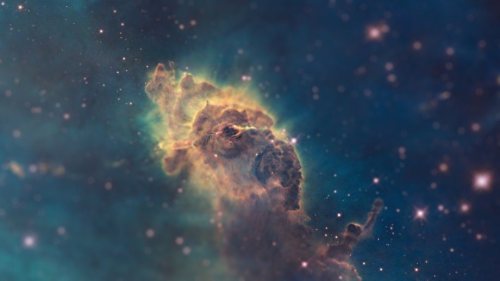
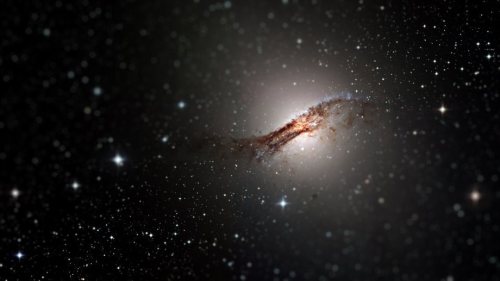
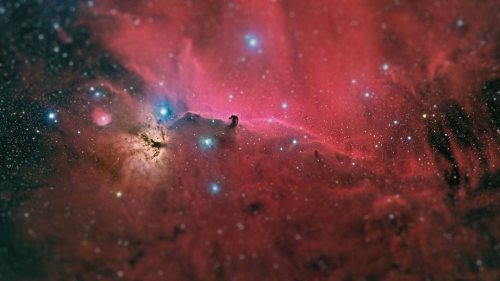
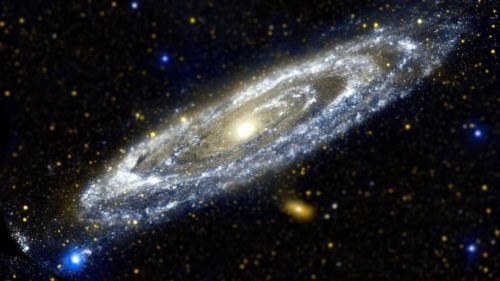
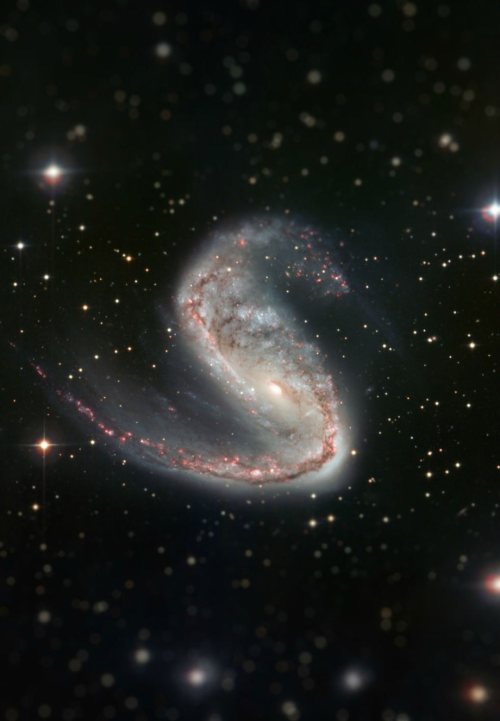
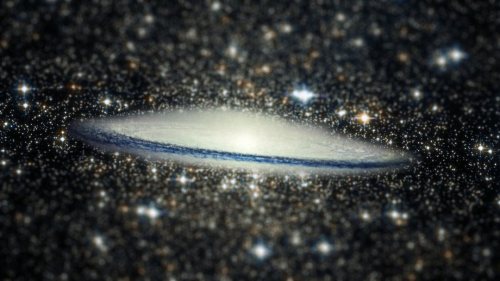
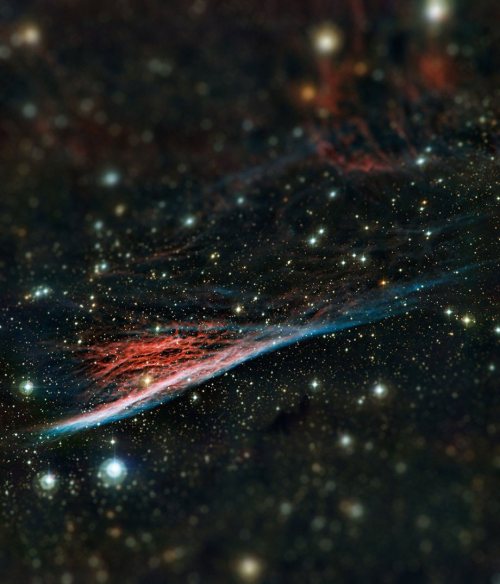
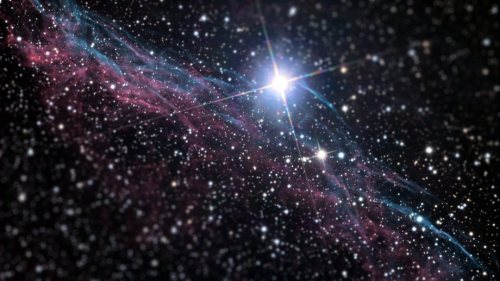
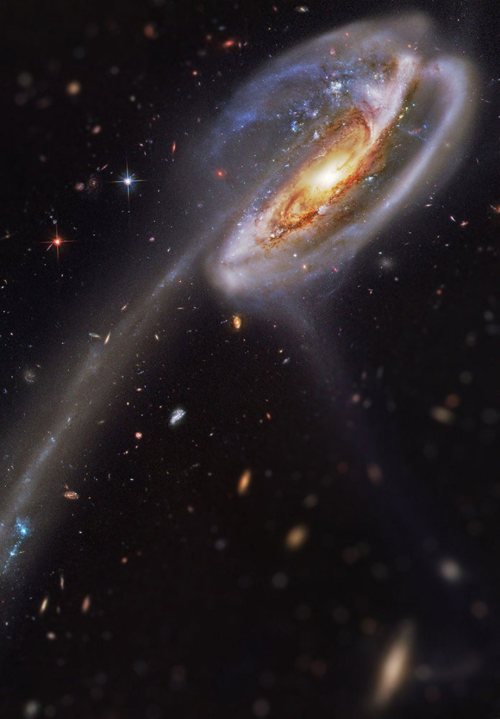
Tilt Shift filters applied to Hubble Space Telescope photos.
Tilt Shift filters make the foreground and background of images more blurred, changing the depth of field of these images.
(x)
[Click for more interesting science facts and gifs]

In this Chandra image of NGC6388, researchers have found evidence that a white dwarf star may have ripped apart a planet as it came too close. When a star reaches its white dwarf stage, nearly all of the material from the star is packed inside a radius one hundredth that of the original star.
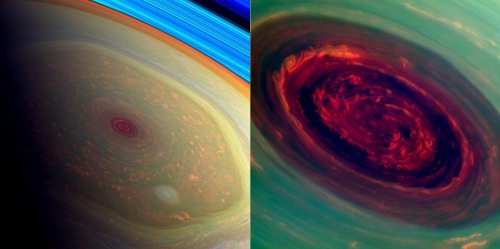
Saturn’s hexagonal storm system in it’s north pole
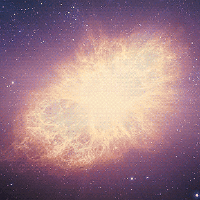







Great Nebula of our Galaxy
A Nebula is an interstellar cloud of dust, hydrogen, helium and other ionized gases located within our cosmos. Long ago Nebula was used as a term for any diffuse astronomical object, including galaxies beyond the Milky Way. As our knowledge of the universe expanded, so did our knowledge of Nebulae.
Credit: NASA/ESA/Image sources

Dying star IC 4406
js

M45, The Pleiades Star Cluster










